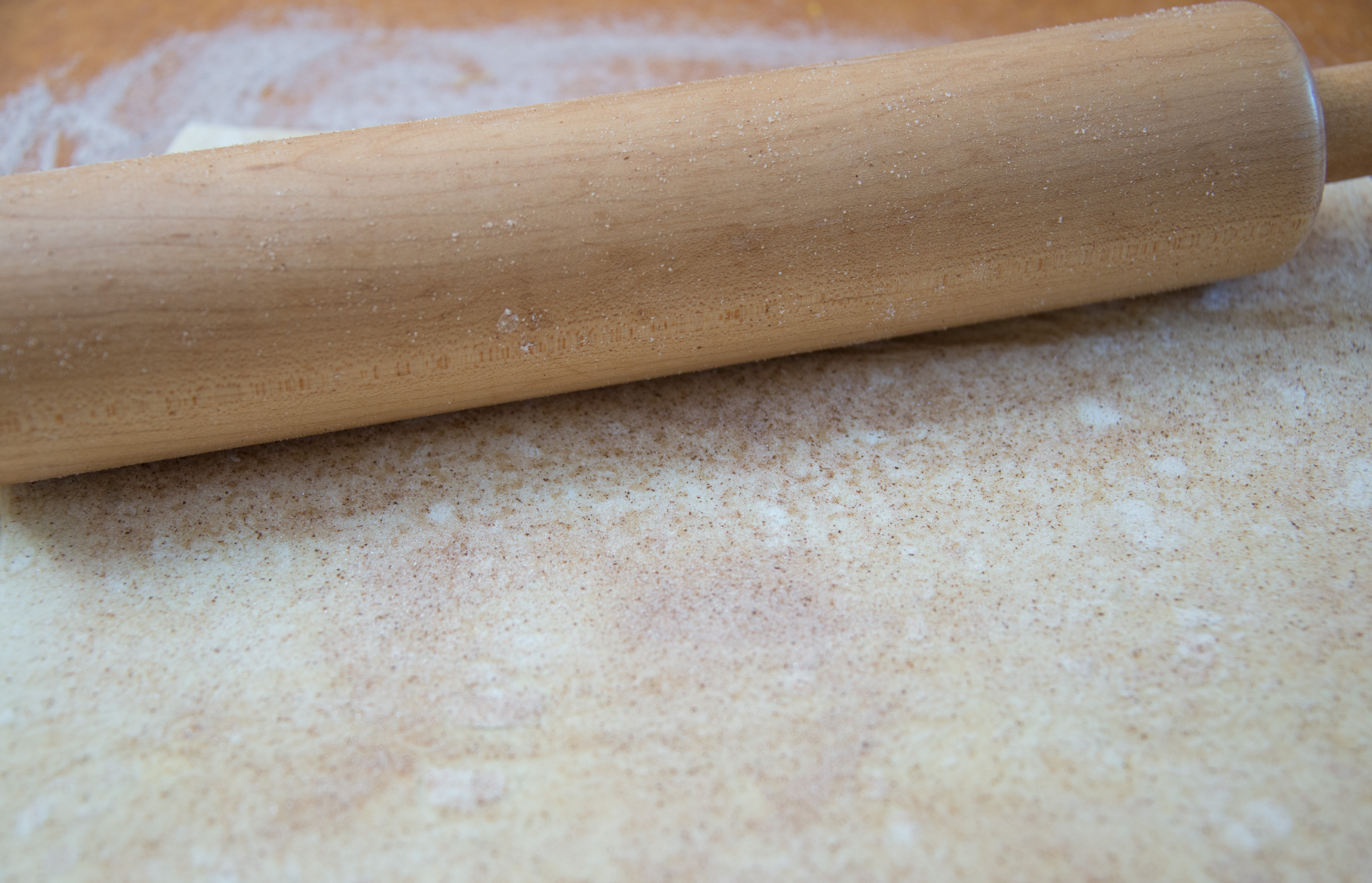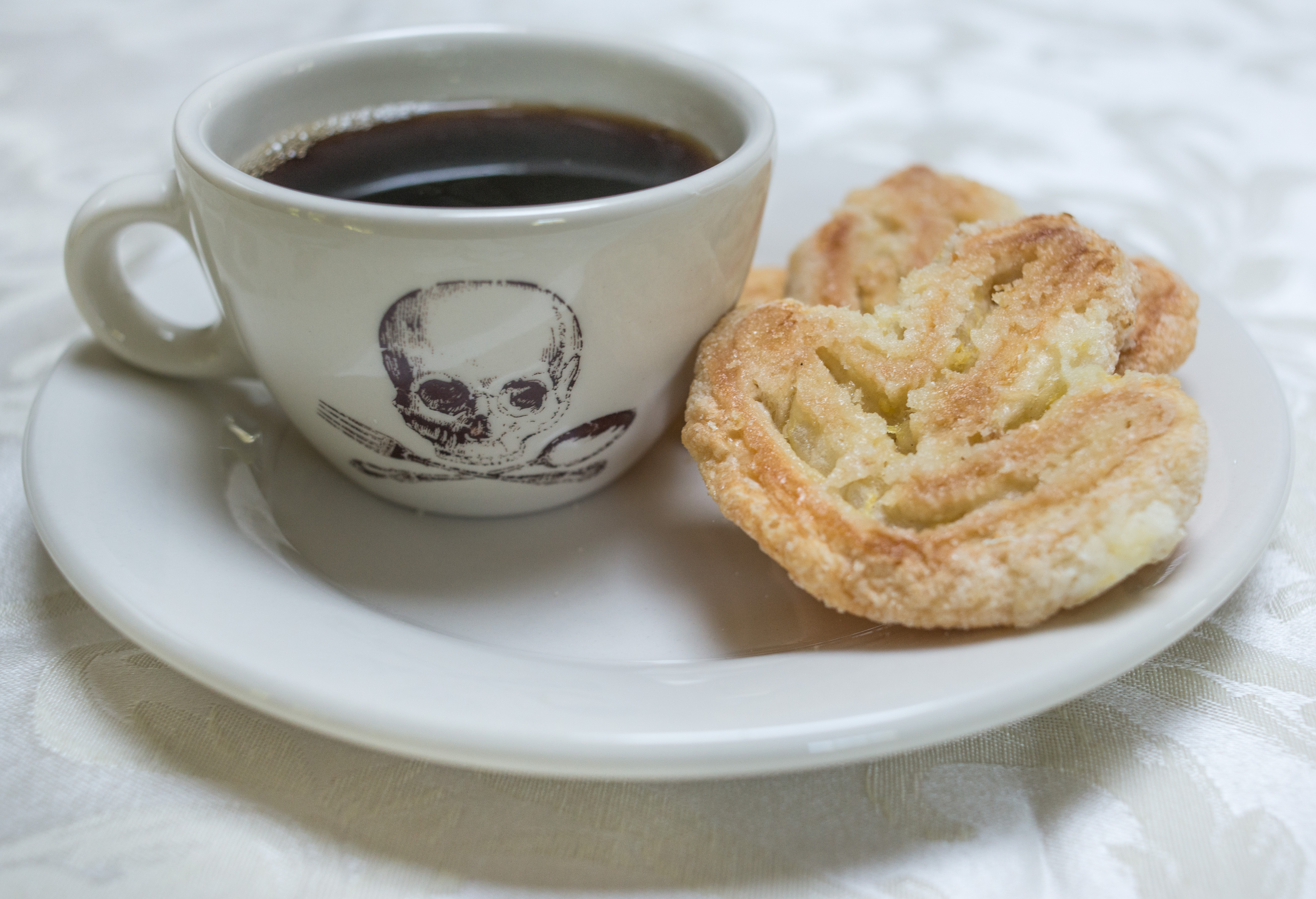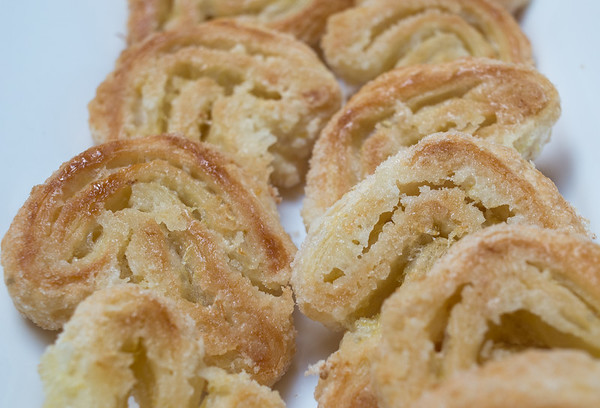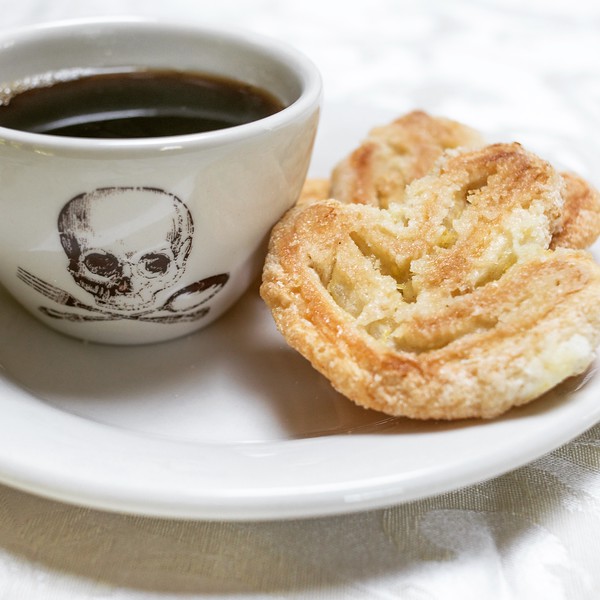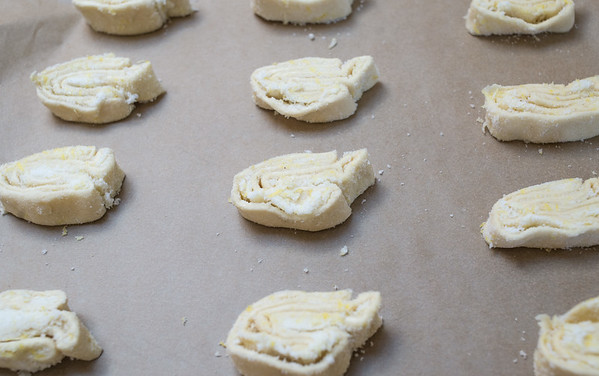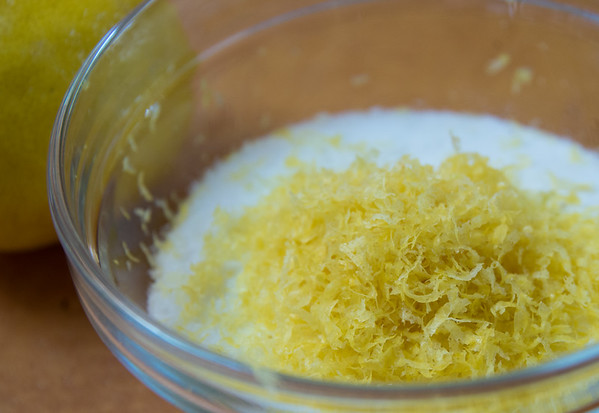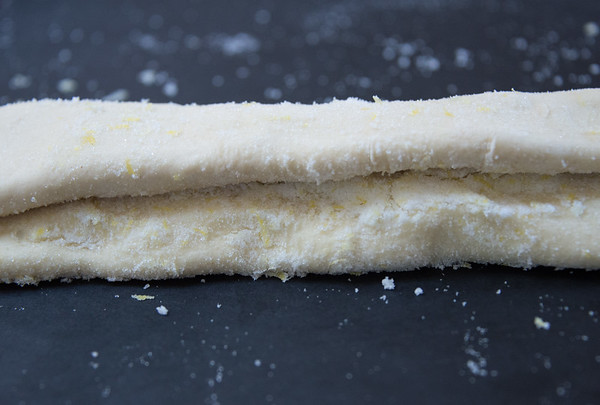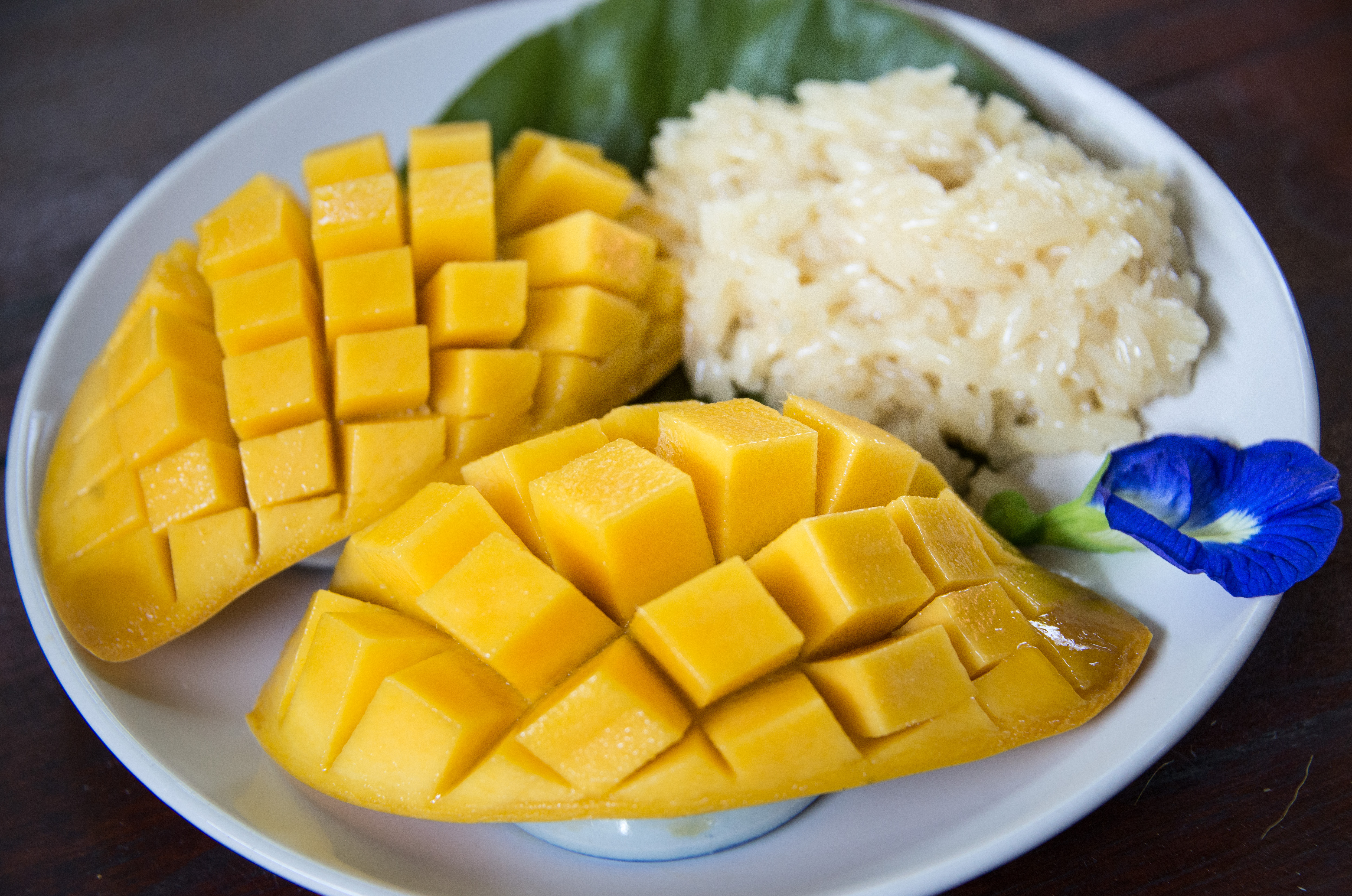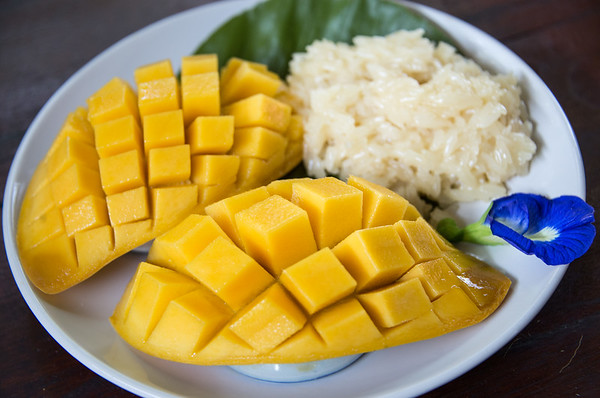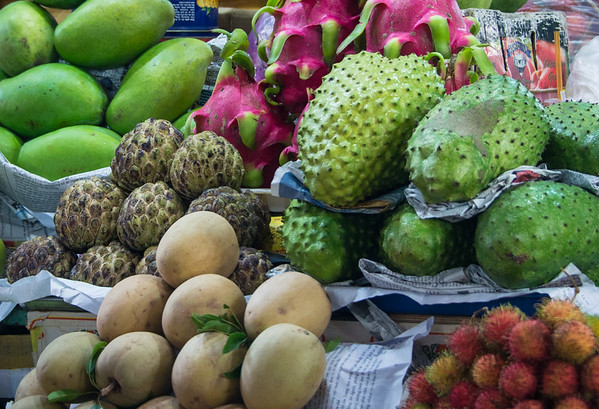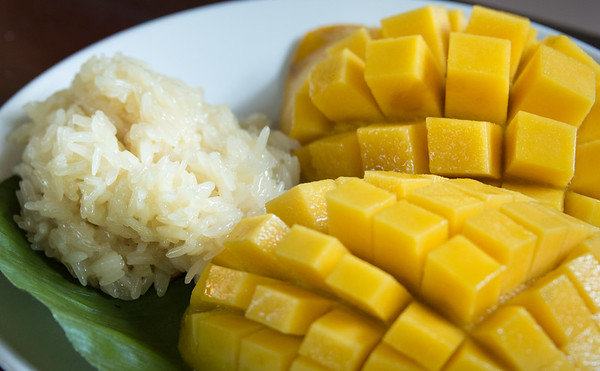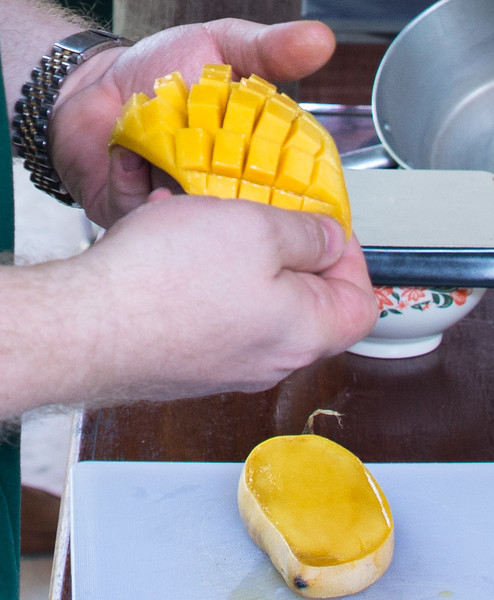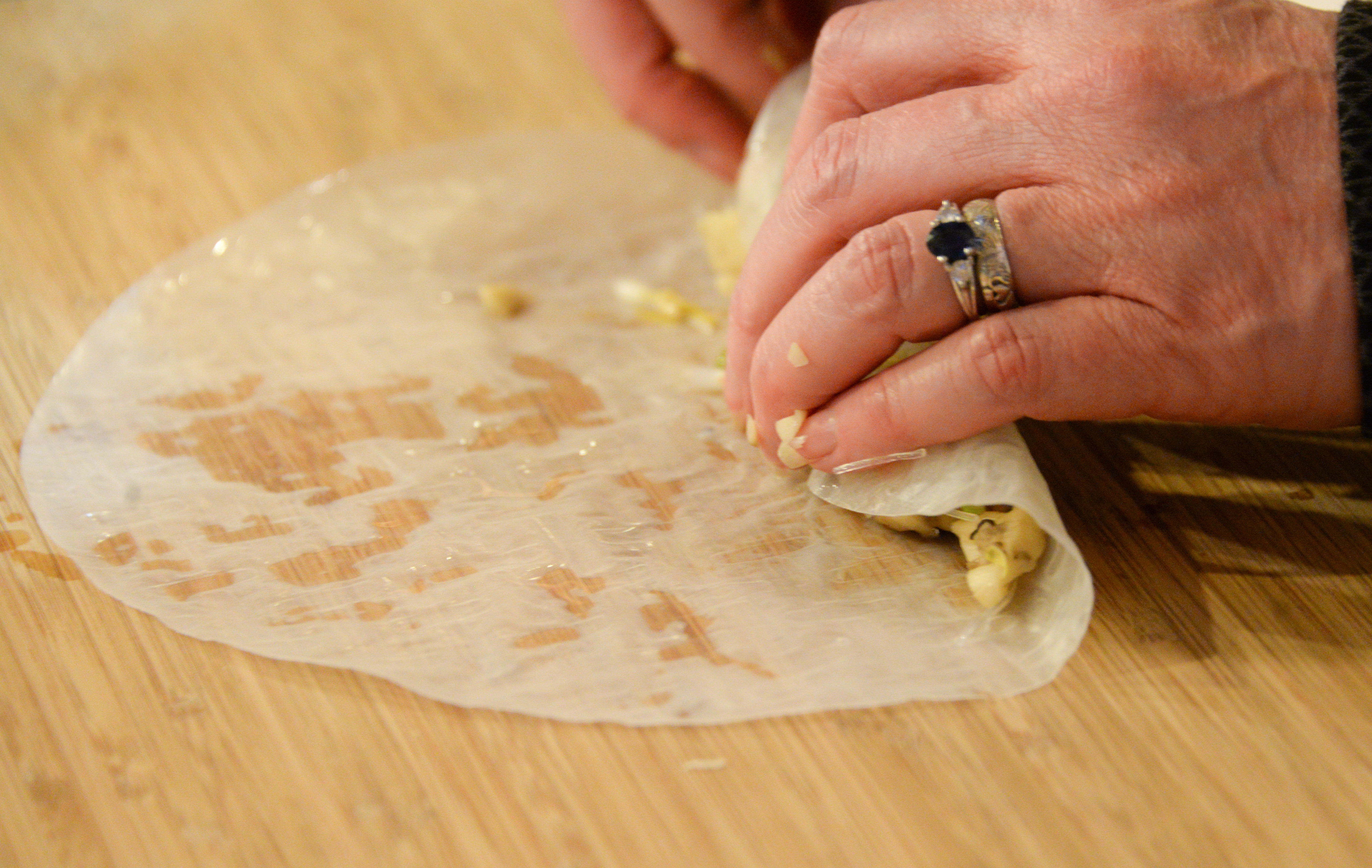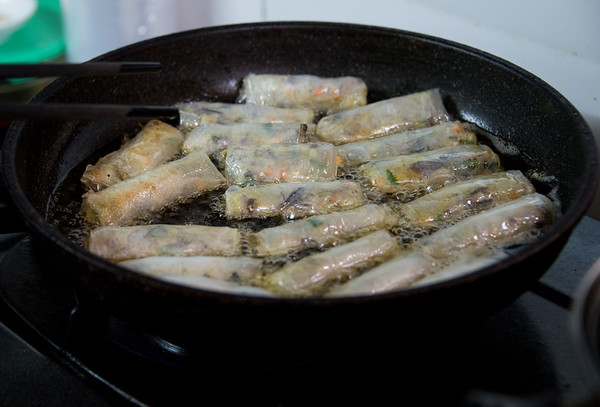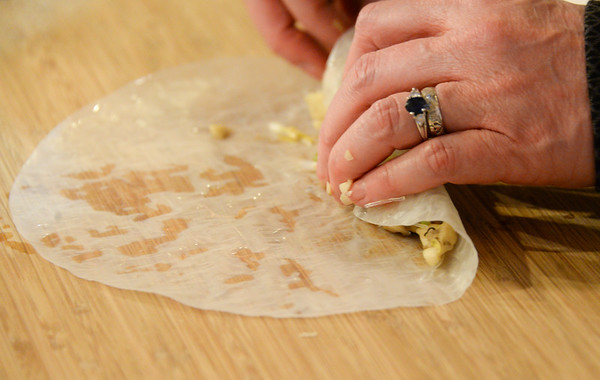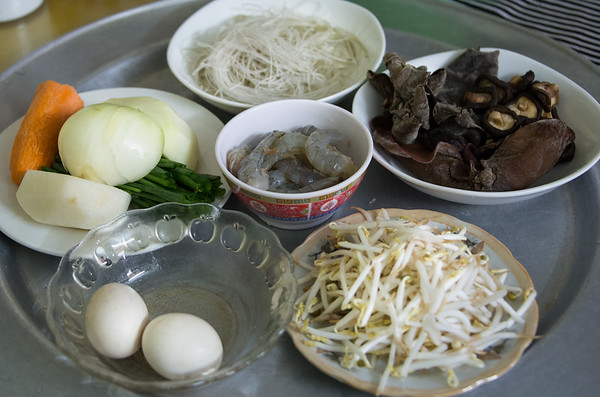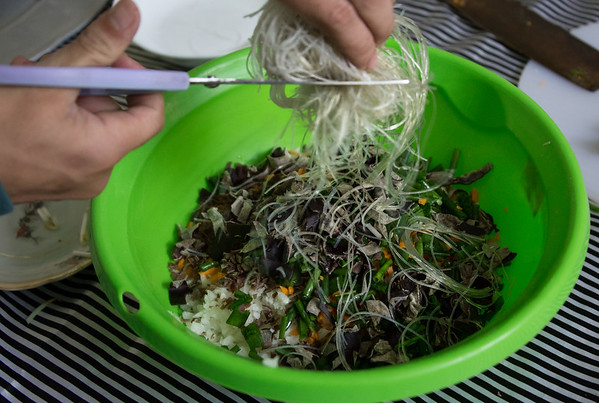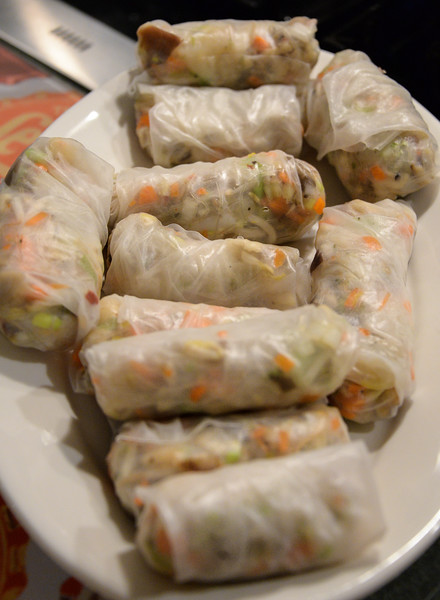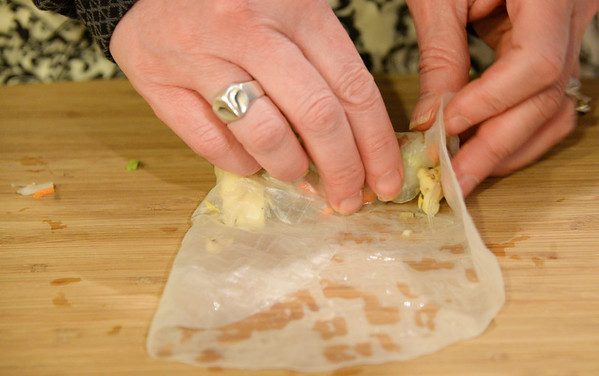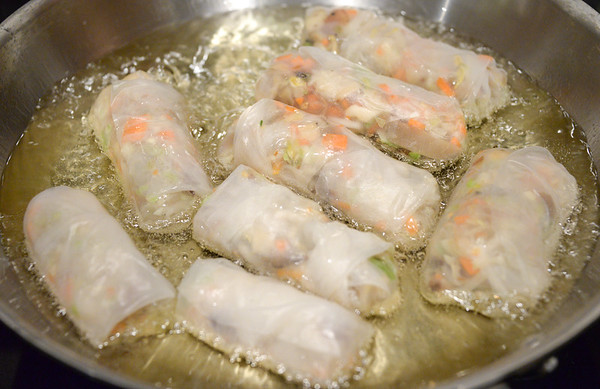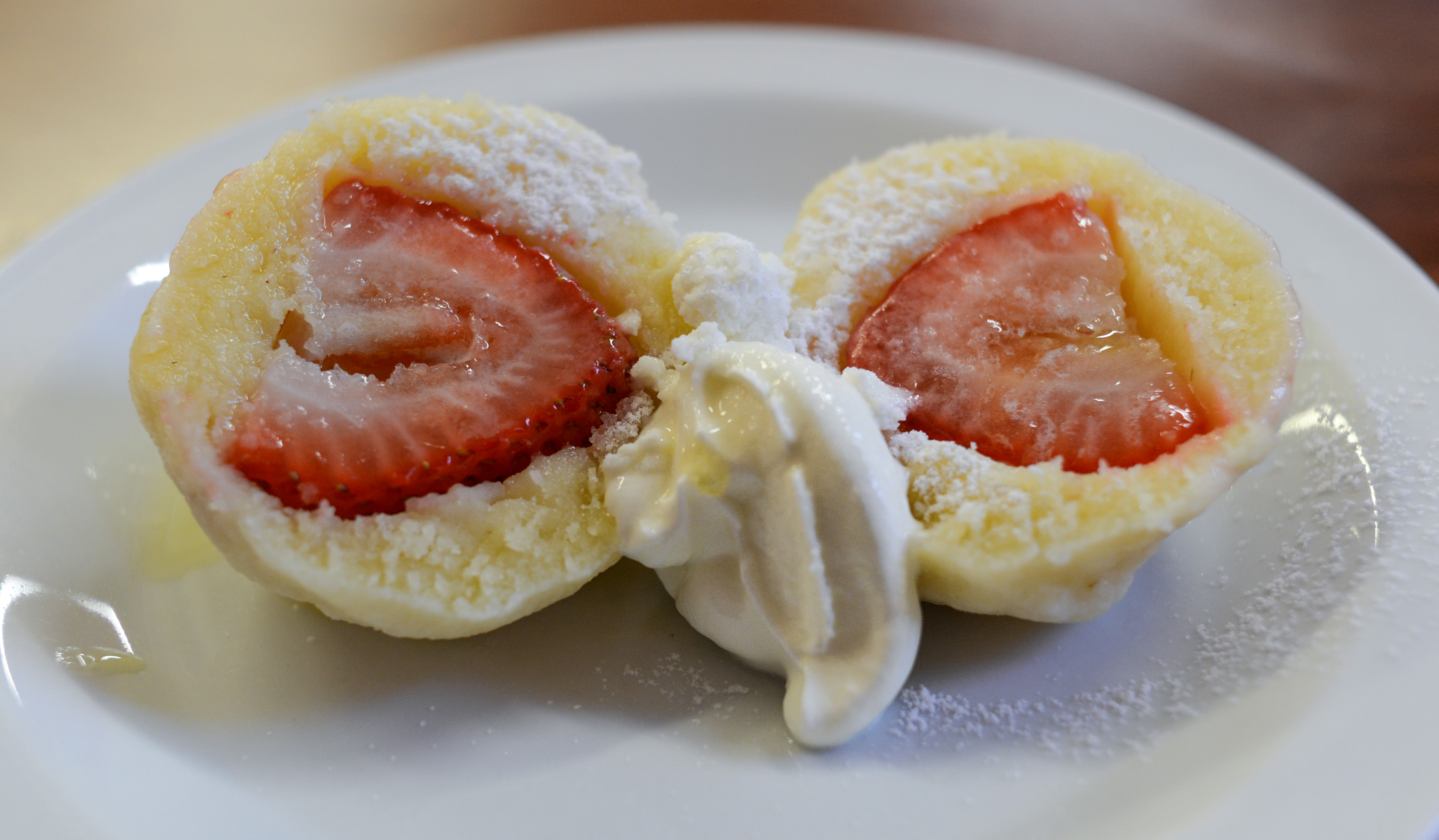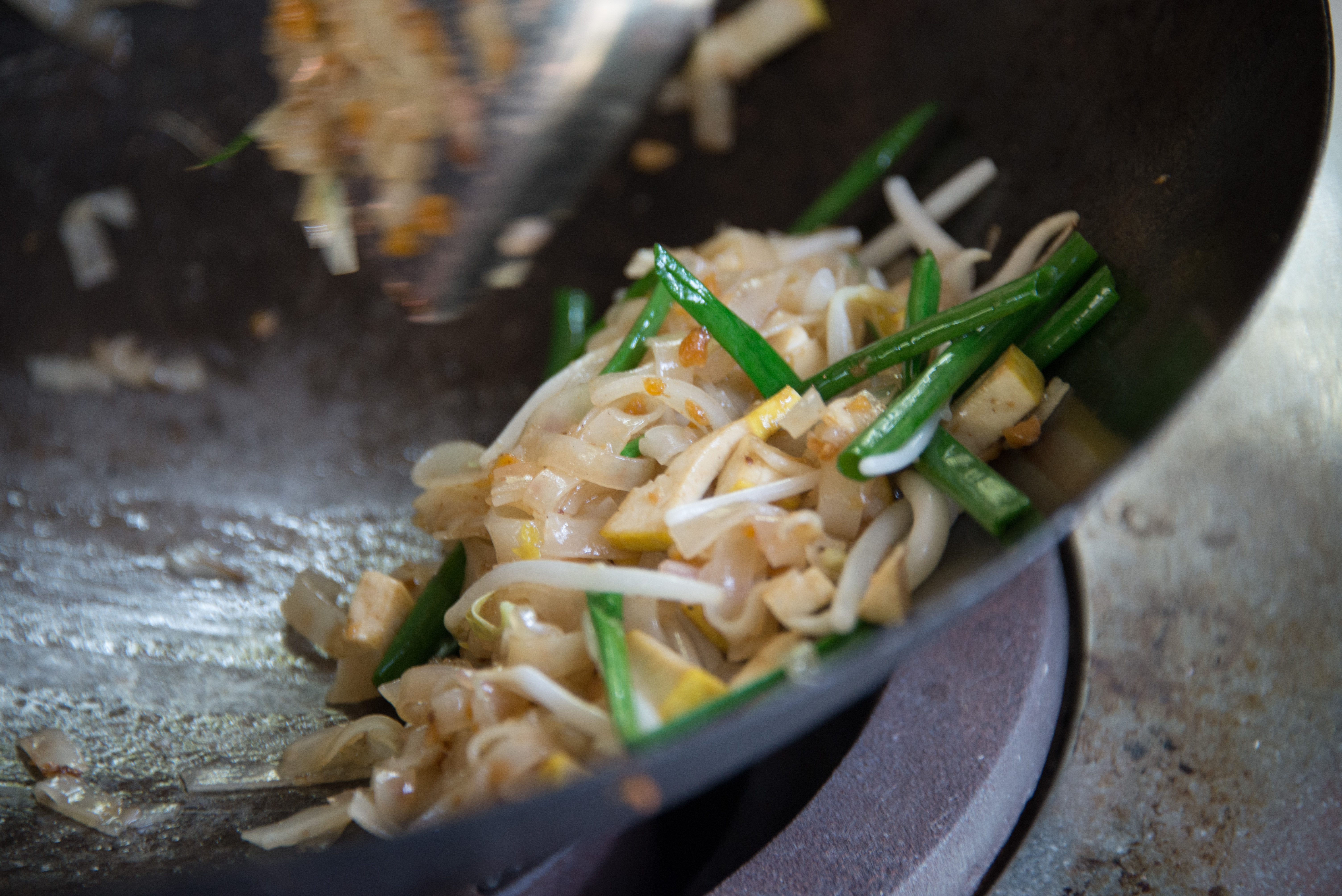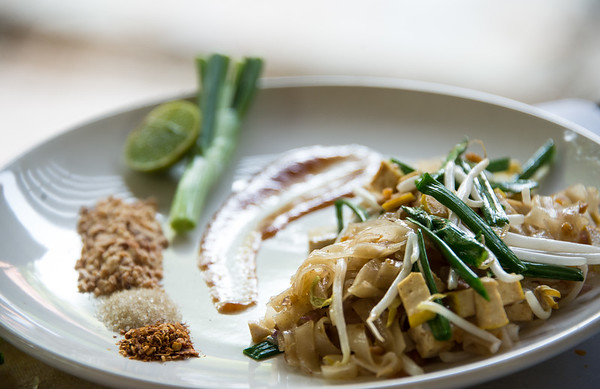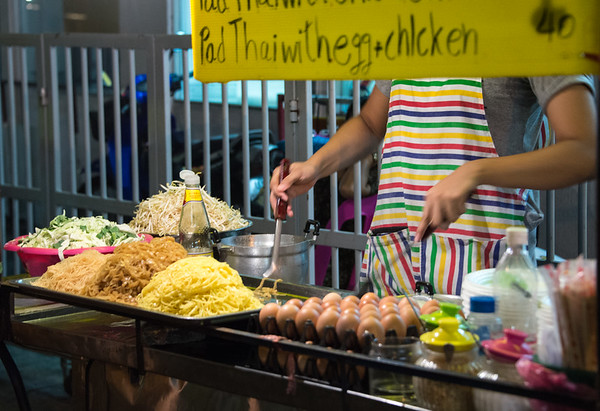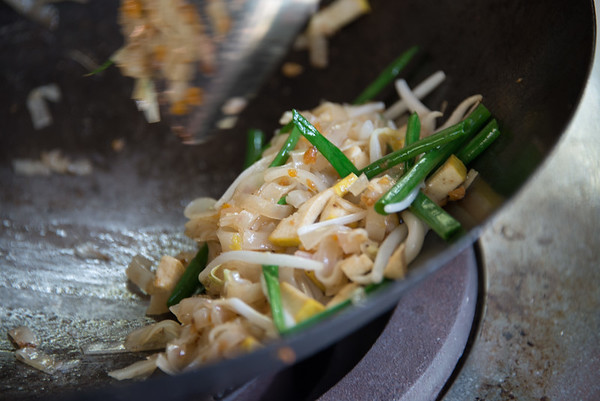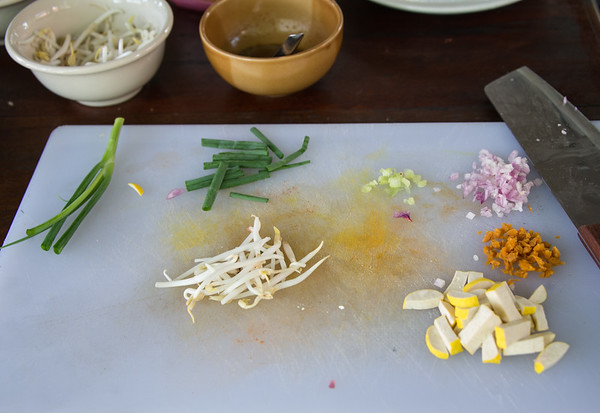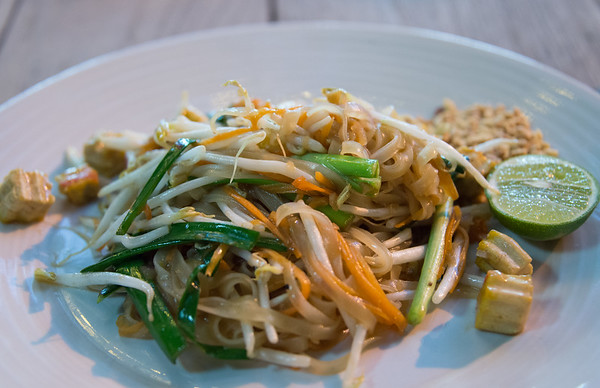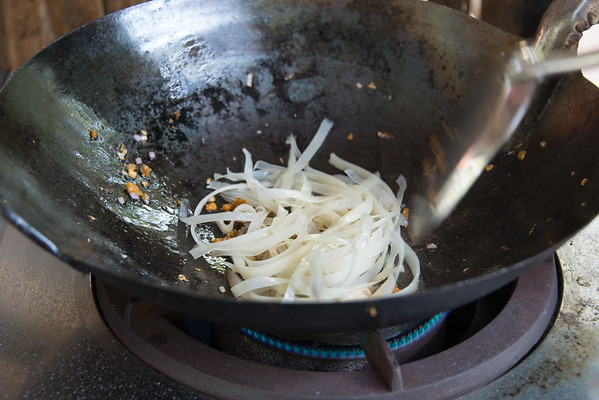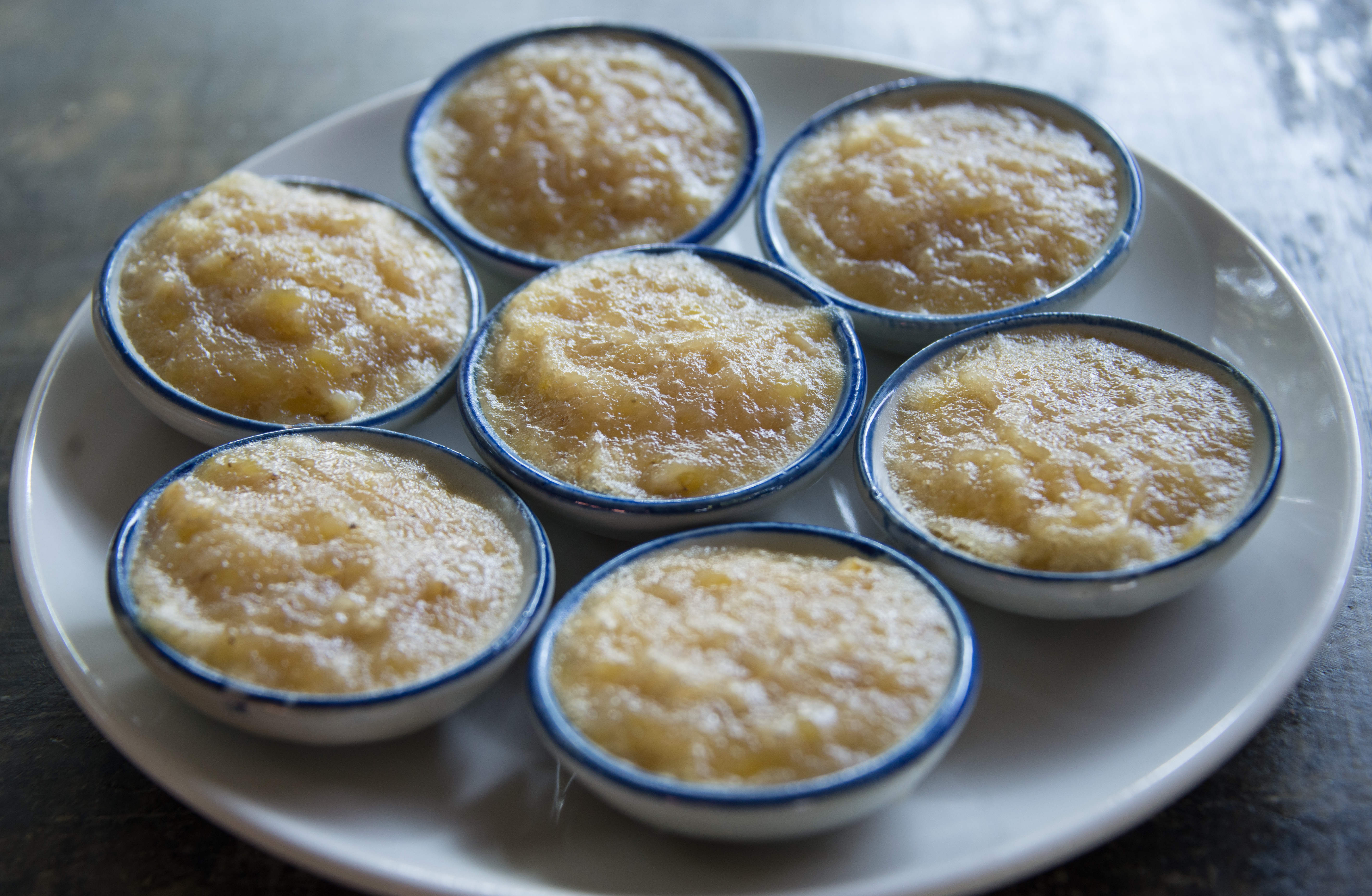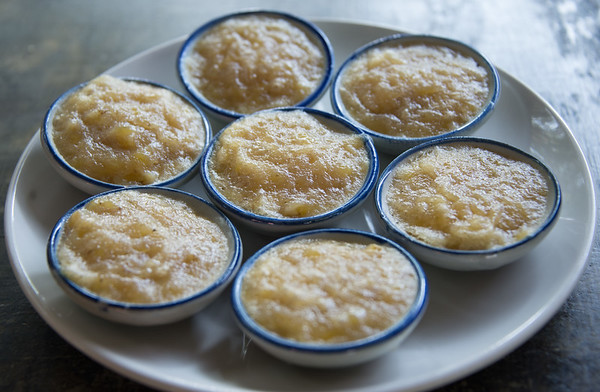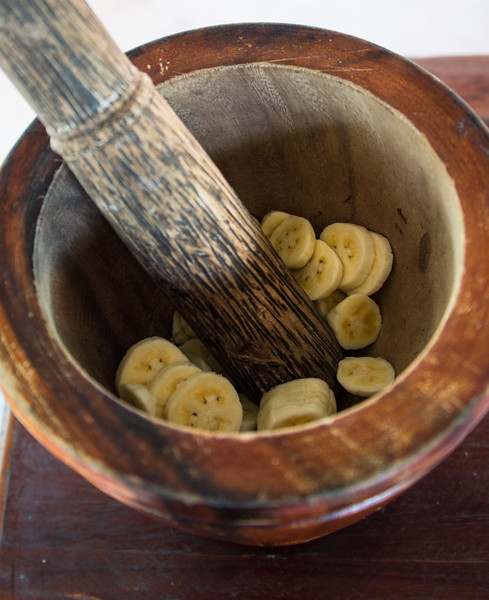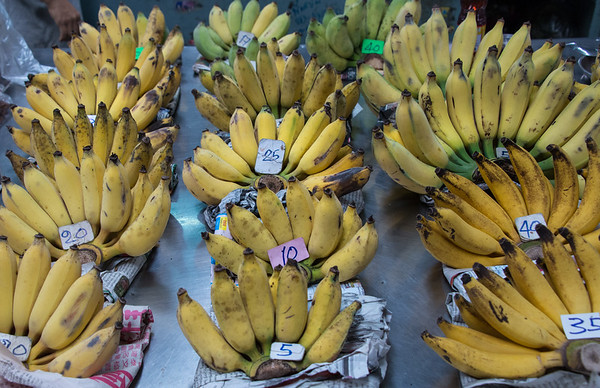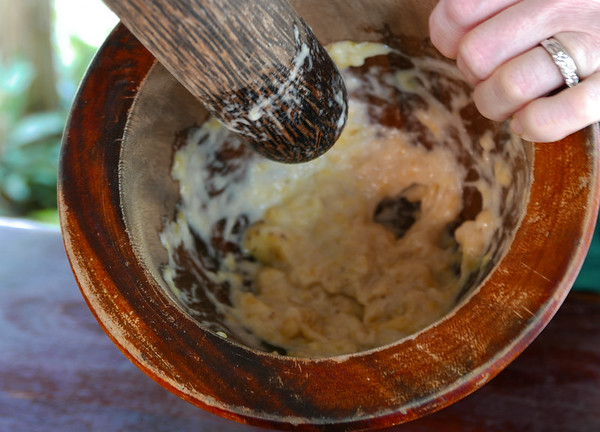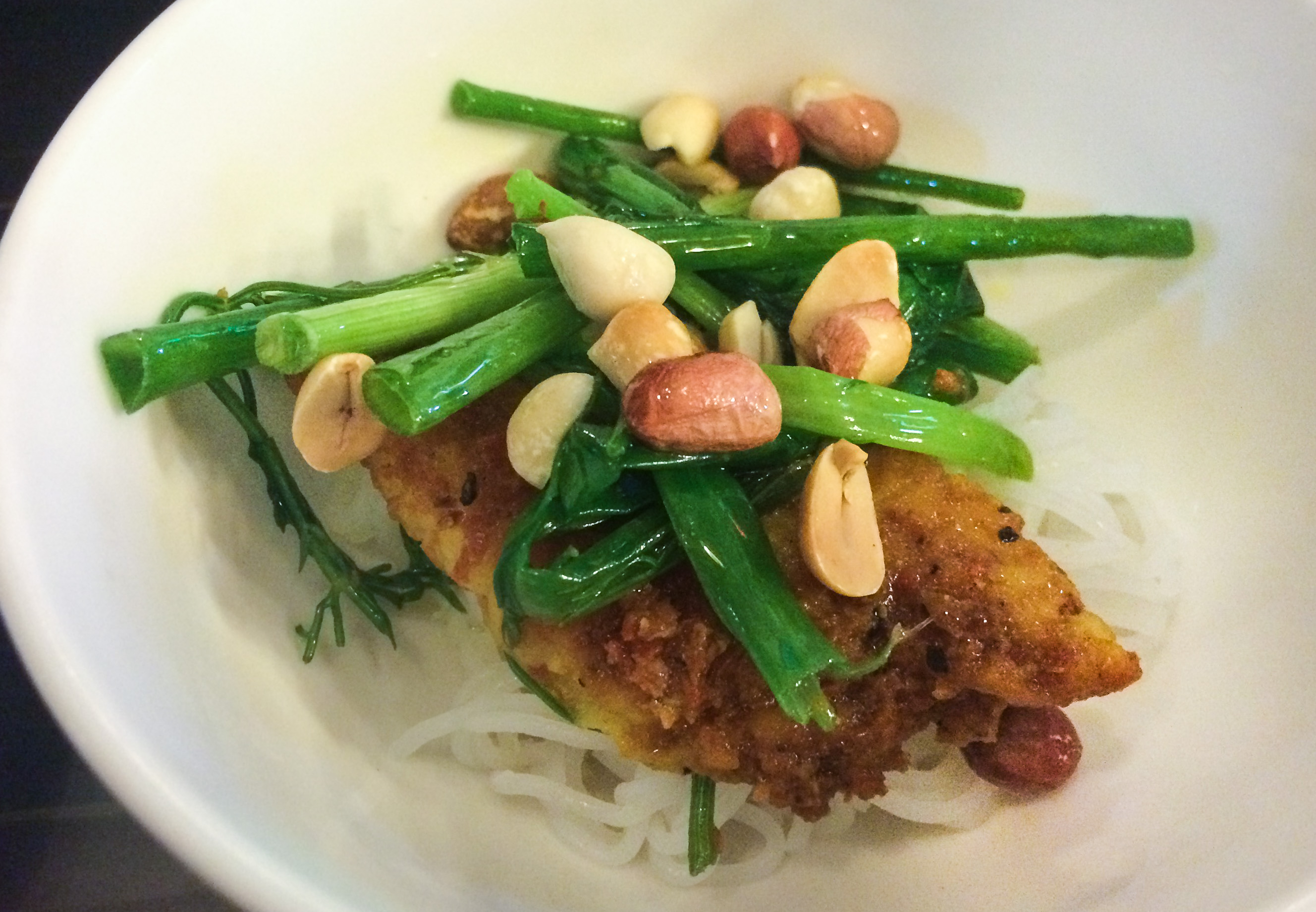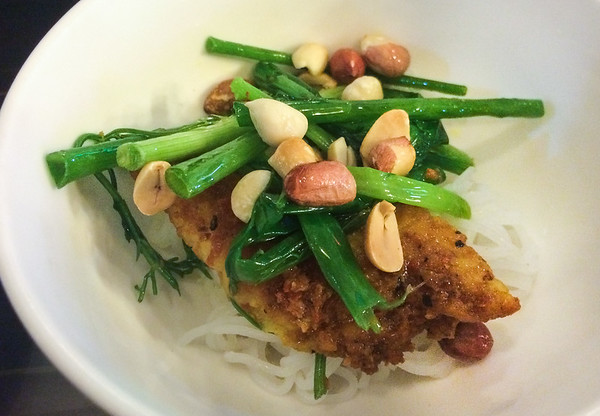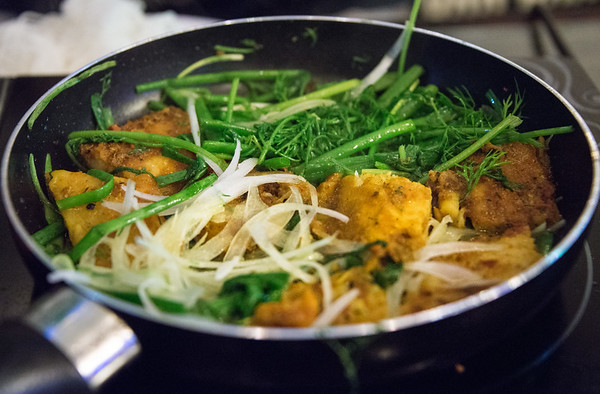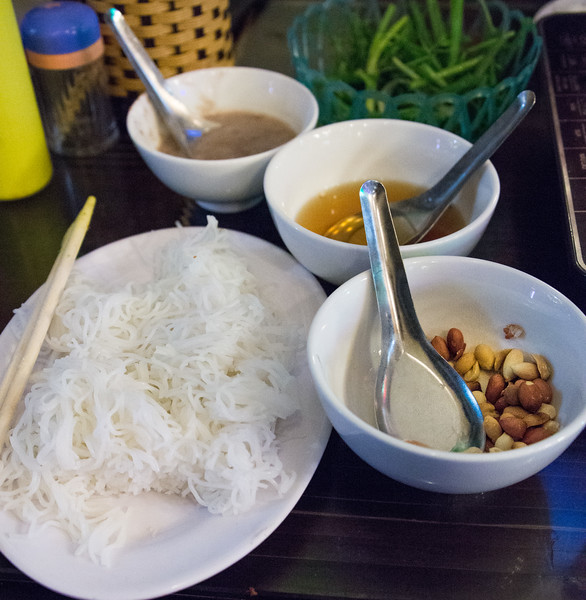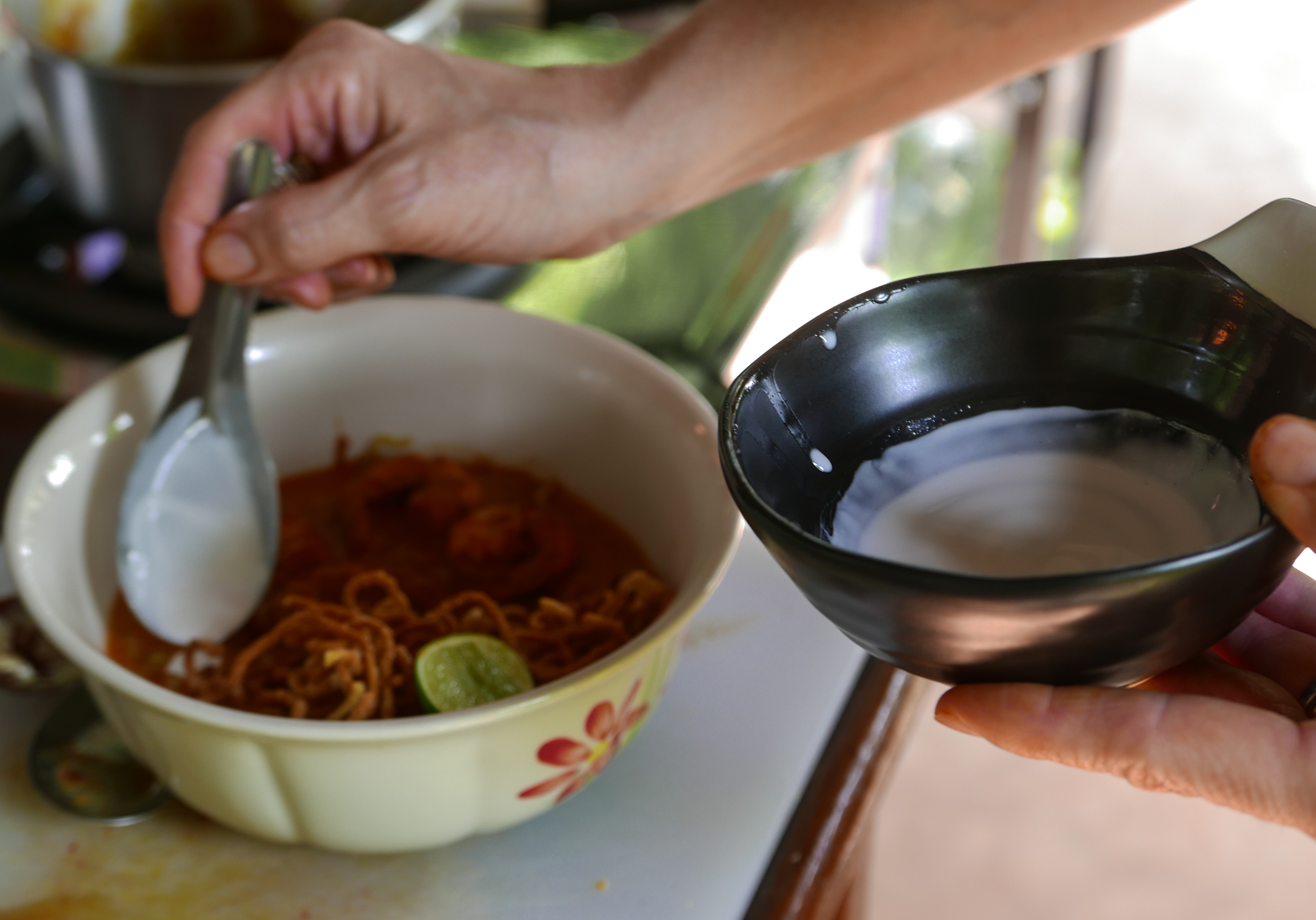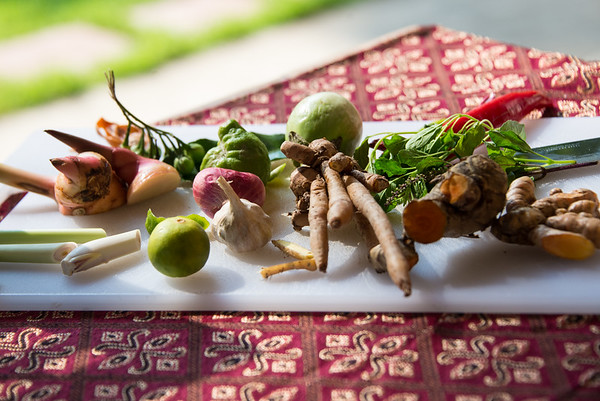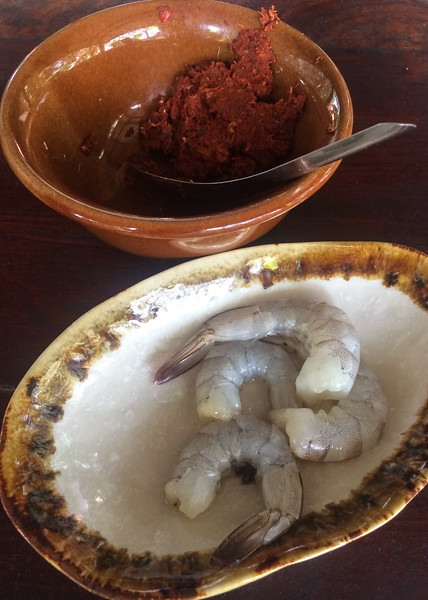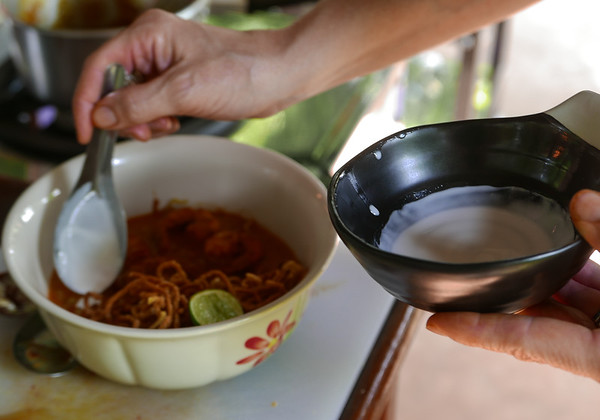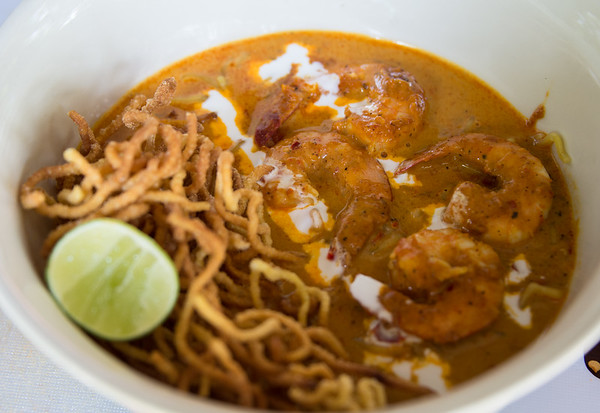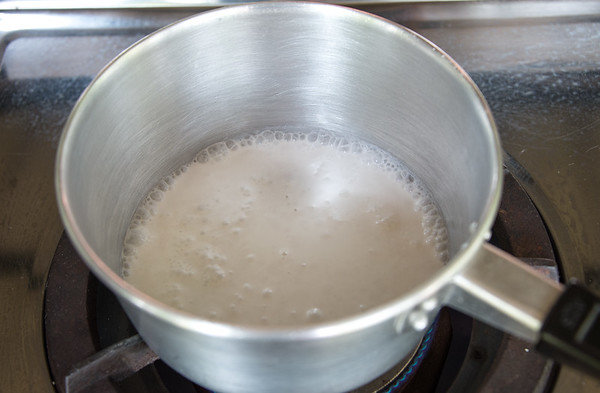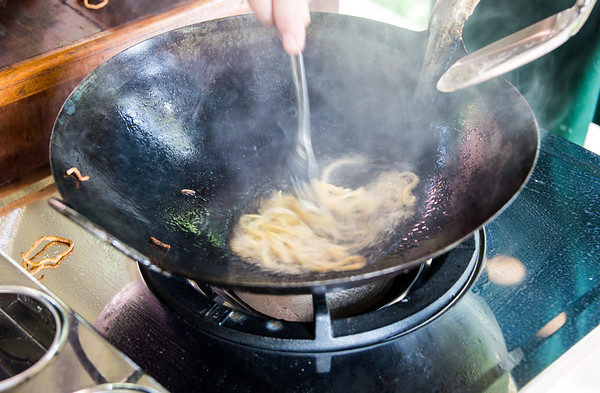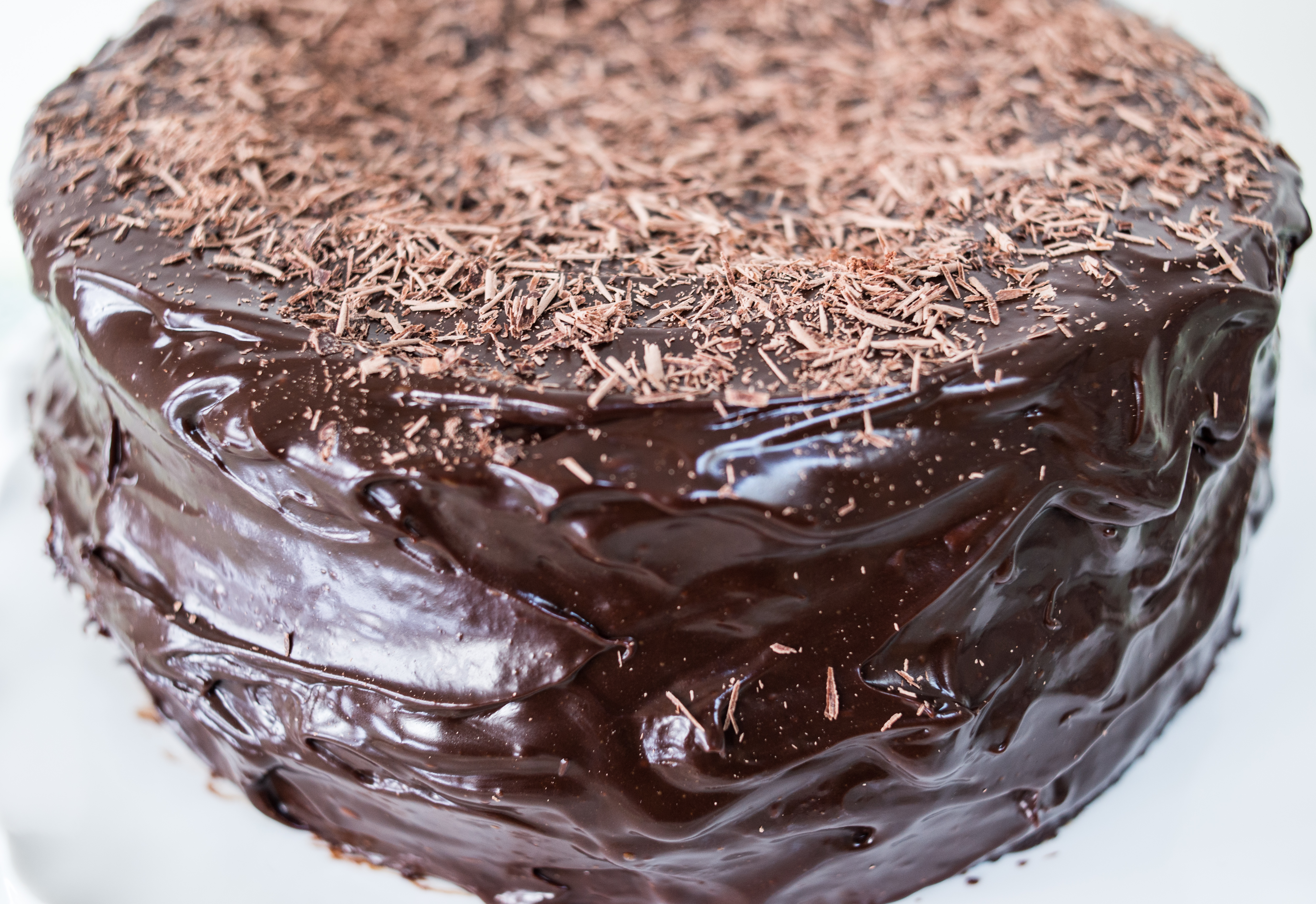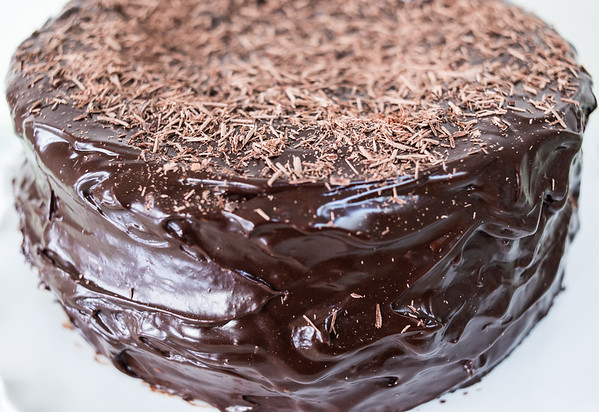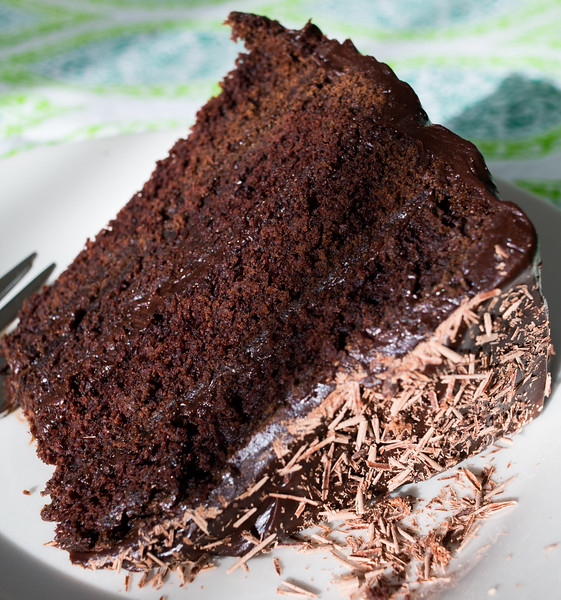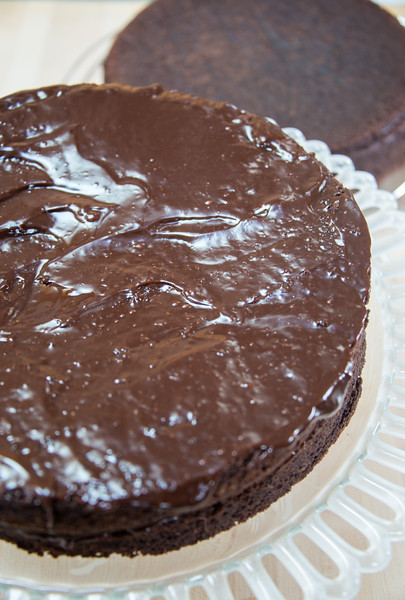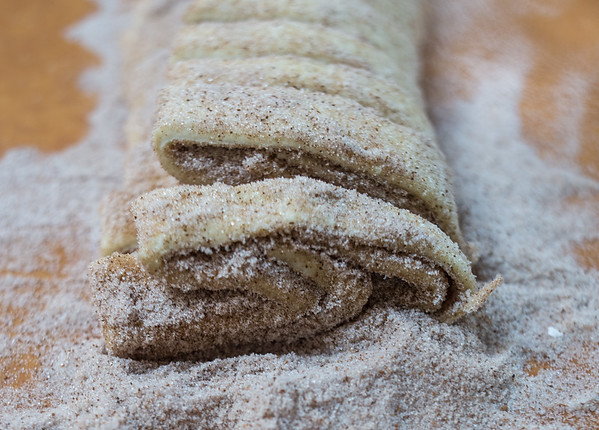
Cinnamon palmiers, sliced and ready to be baked
I spent last week preoccupied with the age-old question of how to pack just enough clothing and books in a carry-on—a carry-on that can only weigh 15 pounds and that will be my only piece of luggage on this trip—for a month of traveling and working on another continent. My fixation meant that I fell a tad behind on sharing a variation on Kitchen Kat’s Lemon Palmiers. Forget what that alternate recipe was? As they say in Australia, which is where I’m headed, “no worries!” It is for cinnamon palmiers.
Think back to July 21st when I posted a scintillating entry on the flaky, caramelized, French cookies known as palmiers. As you might recall, these treats derive their name from their palm-like shape; in French palmier means “palm.” Comprised of folded layers of puff pastry and sugar, which gives them their distinct shape, they’re a light and delicious little sweet.
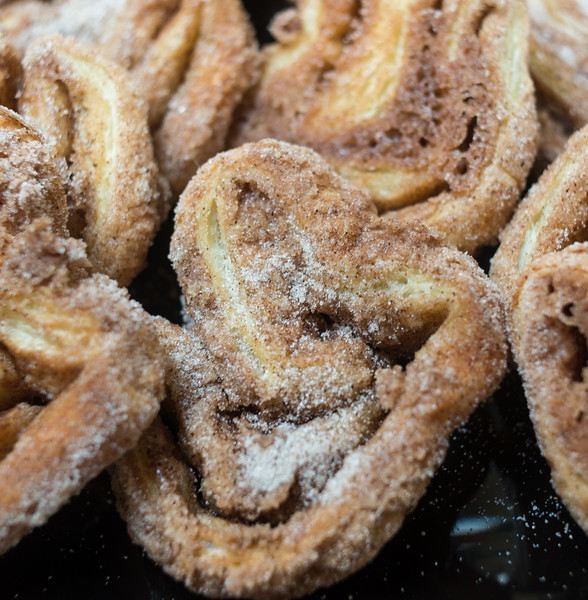
Crisp and aromatic cinnamon palmiers
Palmiers traditionally feature just those two ingredients, sugar and puff pastry. However, as indicated in the previous post, you can spice them up with such additions as citrus zest, cocoa powder or ground cinnamon. As much as I adore the sweetly tart lemon palmiers, I find the headiness of cinnamon palmiers equally, if not more, delightful. Why not try them both and let me know which tastes better to you.
CINNAMON PALMIERS
Makes 3 dozen
1 tablespoon ground cinnamon
1 1/3 cups granulated sugar
1 pound (2 sheets) puff pastry, defrosted
Lightly dust a clean work surface with some of the cinnamon sugar. Place a sheet of puff pastry on top of the sugar and then sprinkle sugar on top of the pastry. Using a rolling pin, roll out the pastry until it’s roughly a 12″ x 24″ rectangle. Sprinkle more sugar on top of the rolled out pastry.
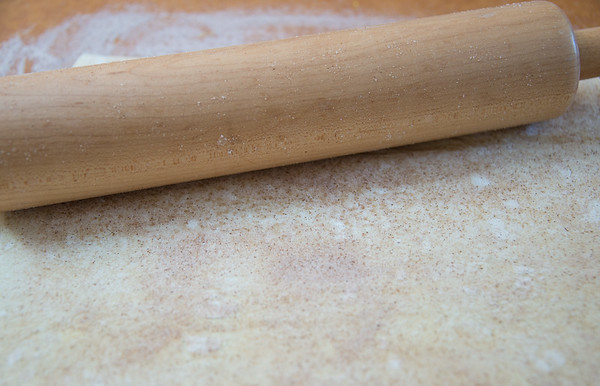
Rolling out the palmier dough
Bring the shorter ends of the pastry to the middle, leaving a half-inch between to two edges. Dust with sugar and then fold each end so that the two edges touch. Dust with sugar again and make one final fold, bringing the one half over the other. Think of this as closing a book and bringing the pages together. Repeat the dusting, rolling, dusting and folding steps with the other sheet of puff pastry.
Refrigerate the palmier dough for 30 to 60 minutes. This will make it easier to slice.
Preheat the oven to 400 degrees Fahrenheit. Line two baking sheets with parchment paper.
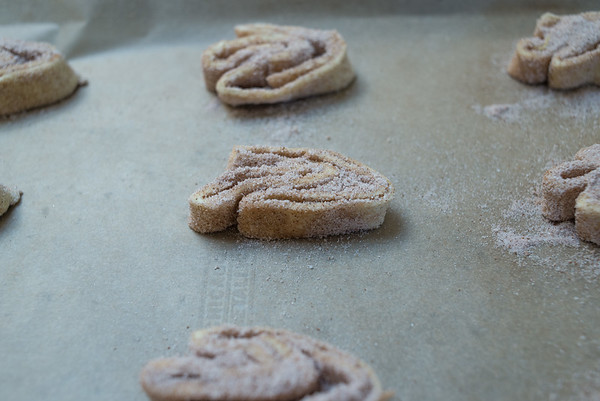
Cinnamon palmiers on a parchment-lined baking sheet
Remove the dough from refrigerator. Using a sharp knife, slice the dough into half-inch cookies. Place them 1 inch apart a lined baking sheet. Bake for 10 minutes, until the bottoms have turned golden brown. Turn the cookies over and bake for another 5 to 8 minutes, until crisp and golden. Cool on the baking sheets for 5 minutes before removing and placing in an airtight container. The cookies will keep for up to 3 days.
